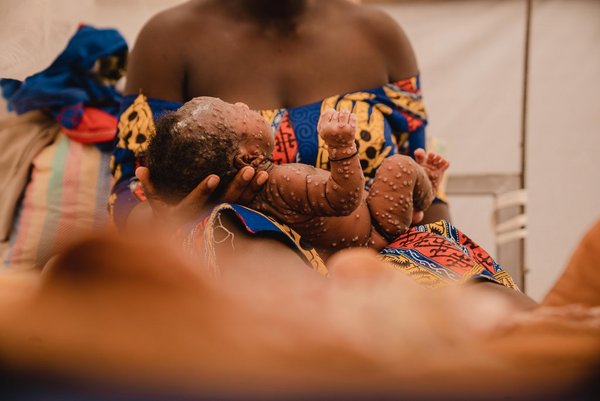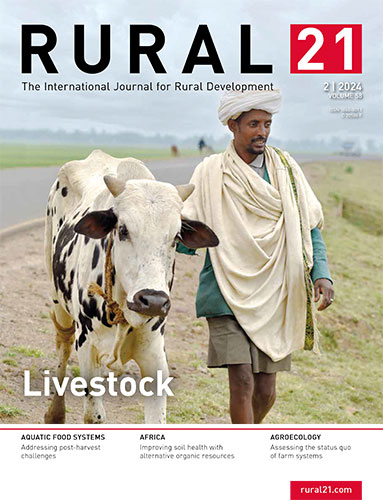 Read this article in French
Read this article in French- Share this article
- Subscribe to our newsletter
Mpox surge in Africa – WHO unveils strategic plan to tackle the crisis
In mid-August 2024, the World Health Organization (WHO) declared that the upsurge of mpox in the Democratic Republic of the Congo (DRC) and an increasing number of other countries in Africa constitutes a public health emergency of international concern (PHEIC) under the International Health Regulations (2005) (IHR).
This is the second PHEIC determination related to mpox in two years. Caused by an Orthopoxvirus, mpox was first detected in humans in 1970, in the DRC. The disease is considered endemic to countries in central and west Africa. Originally appearing in villages near tropical rainforests, mpox is now increasingly occurring in urban areas of Central and West Africa.
Mpox has been reported in the Democratic Republic of Congo for more than a decade and the number of cases recorded annually has steadily increased during this time. Last year, according to WHO, the number of reported cases increased significantly, and this year, by the time of the PHEIC declaration, more than 15,600 cases and 537 deaths had been reported.
WHO states that the emergence and rapid spread of a new virus strain in the DRC, clade 1b, and its detection in neighbouring countries are especially concerning, prompting the PHEIC declaration.
New mpox variants pose greater risk to children
According to UNICEF, the current mpox virus variant is more dangerous for children than the 2022 strain. This time, clade I and clade Ib viruses are spreading, and they are more likely to cause severe or even fatal outbreaks in children.
UNICEF reports that children under 15 years old account for 56 per cent of cases in the current outbreak. In Congo, approximately 77 per cent of deaths are children, compared to only around 5 per cent of all mpox cases across all age groups.
Making mpox vaccines available
The two vaccines currently in use for mpox are recommended by WHO’s Strategic Advisory Group of Experts on Immunization. They are also approved by WHO-listed national regulatory authorities and by individual countries, including Nigeria and the DRC.
WHO Director-General Tedros Ghebreyesus initiated the Emergency Use Listing process for mpox vaccines, accelerating vaccine access for lower-income countries that have not yet issued their own national regulatory approval. This also enables partners, including Gavi and UNICEF, to procure vaccines for distribution.
WHO is collaborating with countries and vaccine manufacturers on potential donations and is coordinating with partners through the interim Medical Countermeasures Network to facilitate equitable access to vaccines, therapeutics, diagnostics and other tools.
A strategic plan to stop outbreaks
On the 26th August, WHO launched a global Strategic Preparedness and Response Plan to stop outbreaks of human-to-human transmission of mpox through coordinated global, regional, and national efforts.
At the time of writing, more than 18,000 suspected mpox cases, with 615 deaths, have been reported in DRC alone, exceeding last year’s record total, and over 220 confirmed cases of clade 1b have been reported in Burundi, Kenya, Rwanda and Uganda. Cases of clade 1b mpox have also been reported in Sweden and Thailand, among people with a history of travel from Africa. The situation is further complicated by outbreaks of other clades in western DRC, Cameroon, Central African Republic, Côte d’Ivoire, Liberia, Nigeria, the Republic of the Congo and South Africa.
The plan covers the six-month period of September 2024–February 2025, envisioning a US$135 million funding need for the response by WHO, Member States, partners including Africa Centres for Disease Control and Prevention (Africa CDC), communities and researchers, among others.
It focuses on implementing comprehensive strategies for surveillance, prevention, preparedness, and response, advancing research and equitable access to medical countermeasures like diagnostic tests and vaccines, minimising animal-to-human transmission and empowering communities to actively participate in outbreak prevention and control.
Ines Lechner, editor Rural 21
More information:





Add a comment
Be the First to Comment